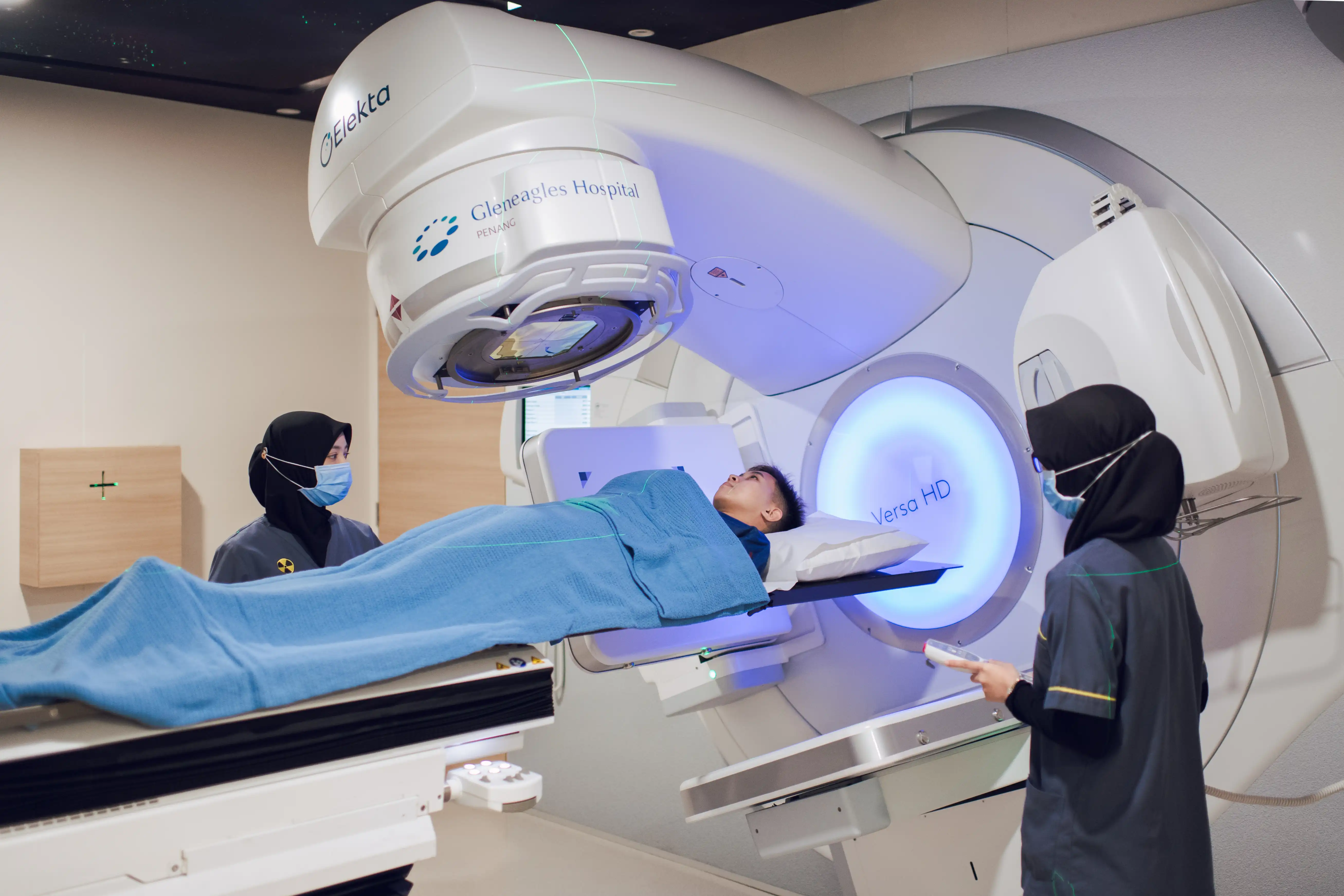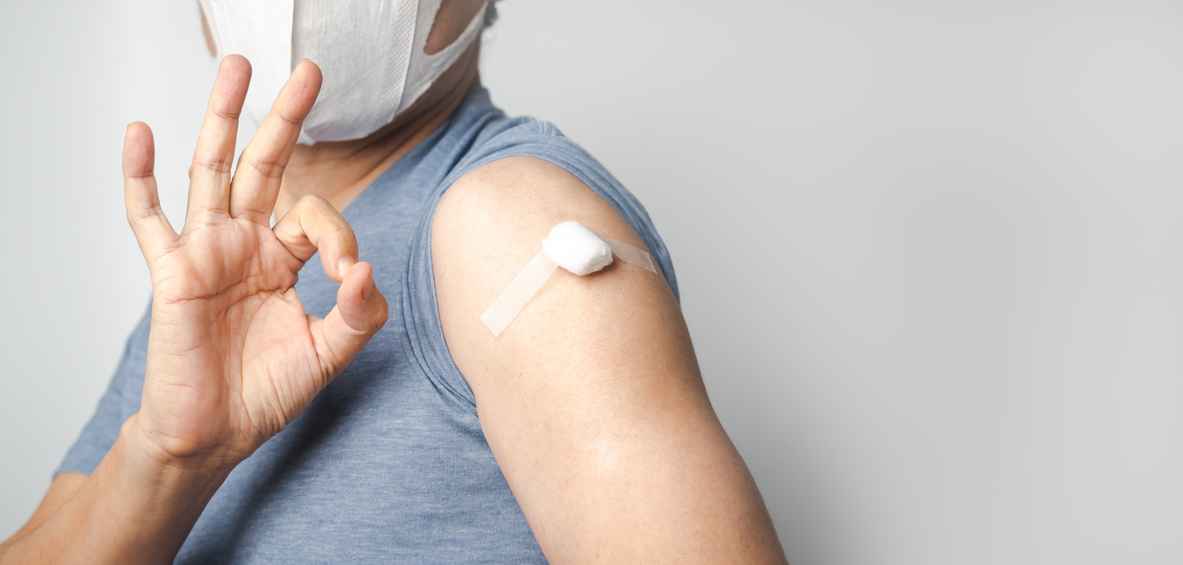Deep Inspiration Breath Hold Radiation Therapy (DIBH): Effective Reduction of Cardiopulmonary Side-effects for Breast and Lung Cancer Patients
Radiation therapy can curb the spread of cancer cells after surgery, but high-energy waves emitted during the process can cause long-term damage to the surrounding normal tissues and organs. Deep Inspiration Breath Hold (DIBH) radiation therapy greatly reduces the potential of heart and lungs damage in the treatment of breast and lung cancers, simply by two additional procedures – inhaling deeply, then holding one’s breath.
In this article, Dr. Lee Wei Ching, our resident consultant Radiotherapist & Oncologist share her insights and expertise into Deep Inspiration Breath Hold (DIBH) radiation therapy.
Suppose one compares cancer treatment to a battle. In that scenario, tumour removal surgery is the commander in chief, responsible for eliminating the head of enemy forces. At the same time, radiotherapy and chemotherapy are the troops responsible for wiping out the surrounding enemy soldiers
Dr. Lee Wei Ching states that if a patient has breast-conserving surgery, then post-operative radiotherapy is necessary. If a patient has a total mastectomy and the cancer is at stage 1 (a tumour of less than 2cm in diameter), there is usually no need for radiation therapy. As for stage 2, 3 or 4 patients, radiation therapy is necessary.
Although high-energy radiation from radiotherapy can destroy cancer cells in the target area, it also destroys healthy cells which causes damage to tissues and organs in the area of radiation. Medical teams worldwide have been working for years to minimise the side effects of radiotherapy and develop new technologies to treat cancer without harming the body.
The Deep Inspiration Breath Hold (DIBH) radiation therapy is one of the results of this research. As the first hospital in North Malaysia to introduce this device and system, Gleneagles Hospital Penang is committed to reducing the impact of radiotherapy on the heart and lungs for breast and lung cancer patients.
Why The Focus on Breast and Lung Cancer?
Dr. Lee Wei Ching explains that when a person inhales deeply, the lungs expand, and the distance between the left breast (the cancerous area) and the heart is increased. When breast cancer radiotherapy is administered, the radiation thus avoids the heart, reducing the radiation exposure.
The human heart is positioned to the left; therefore, Deep Inspiration Breath Hold (DIBH) radiation therapy is generally targeted at the treatment of the left breast.
As for lung cancer patients, the lungs stop vibrating during deep inhalation and breath-hold, and the cancerous area is fixed in the same position. The radiotherapy is thus locked in place, minimising the lung area affected
Reduced exposure to radiation can reduce the risk of sequelae such as heart disease and pneumonia, allowing patients to enjoy a better quality of life after recovery.
How Is Deep Inspiration Breath Hold (DIBH) Radiation Therapy Performed?
Step 1: Process of Scanning in the CT Simulation Room
In the CT simulation room, the patient will lie on the radiotherapy bed and perform two breathing patterns - normal breathing and deep inspiration breath-hold. The therapy radiographer will give instructions and guide you throughout the process. After the CT scan, details of the patient's cancerous areas, the extent of inspiratory expansion of the lungs, and the heart's position will be recorded on CT scan images for the doctor, medical physicist, and therapy radiographer to analyze.
Step 2: Treatment Planning in Physics Room
The physics room is the room where medical physicists analyze and design treatment plans for each patient based on the scanned images sent from the CT simulation room.
Step 3: Radiation Therapy Treatment room
As the treatment room is a high radiation area, therapy radiographers will operate remotely from the control room by using precise computerized instruments. They will give instructions and observe you through CCTV.
Below are the steps of the procedure:
1. Patient lies on the radiotherapy bed and extend their arms above their head (the usual lying position for breast cancer radiotherapy treatment).
2. Following the indication box provided through the smart spectacle, patient will be instructed to inhale deeply and hold their breath
3. Once the inspiratory index has been reached, the instrument will automatically administer radiation to region of interest according to treatment plan in Step 2.
Studies have shown that Deep Inspiration Breath Hold (DIBH) reduces cardiopulmonary side effects. Compared to conventional radiotherapy, Deep Inspiration Breath Hold (DIBH) radiation therapy was associated with 10.6% less heart injury. Also, compared to conventional radiotherapy, Deep Inspiration Breath Hold (DIBH) radiation therapy was associated with 4.2% less lung damage.
According to Dr. Lee Wei Ching, the side effects of Deep Inspiration Breath Hold (DIBH) radiation therapy are the same as those of standard breast cancer radiotherapy. The side effects include dry red skin, skin tissue fibrosis, lung fibrosis, fatigue, sore throat, etc. However, with the adjustment of the radiotherapy scope, it can reduce the damage to the heart and lungs.
The number of Deep Inspiration Breath Hold radiation therapy treatment sessions is comparable to conventional radiotherapy, except that the former is more time-consuming and requires more careful planning by the medical team.
Dr. Lee Wei Ching recommends this treatment for young people as they can expect a better quality of life with the reduced after-effects associated with this treatment.












